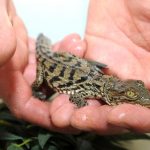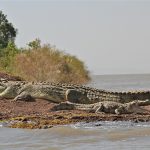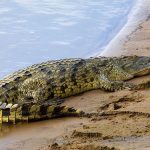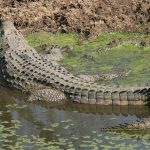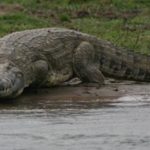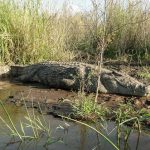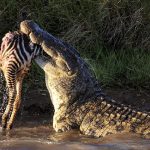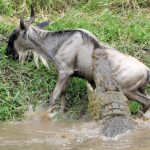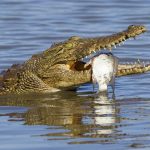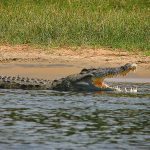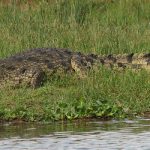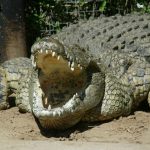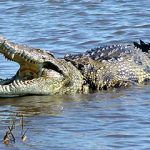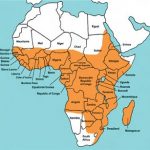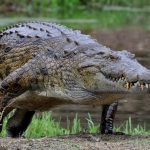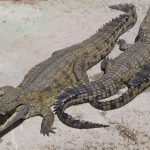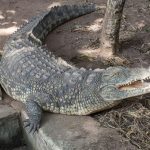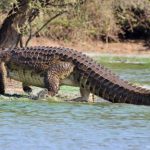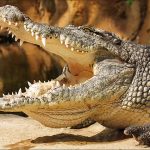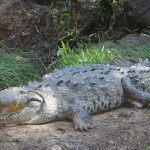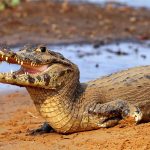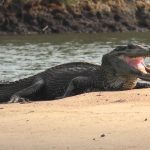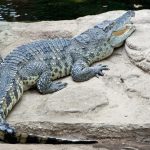Nile Crocodile
Nile crocodile is a species of crocodile found extensively in large parts of Africa. It is considered the second largest reptile in the world, second only to the saltwater crocodile. Like other crocodile species, it is lethargic and spends long hours basking. The species possess a rich vocal range and good hearing ability.
| Kingdom | Animalia |
| Phylum | Chordata |
| Class | Reptilia |
| Superorder | Crocodylomorpha |
| Order | Crocodilia |
| Family | Crocodylidae |
| Genus | Crocodylus |
| Scientific Name | Crocodylus niloticus |
| Other Names | Mamba, Garwe, Ngwenya, African Crocodile, Ethiopian Crocodile |
| Size | 3.5 and 5 m; largest recorded specimen measured 6.45 m |
| Weight | 225 to 750 kg; largest recorded specimen weighed around 1090 kg |
| Color | Dark bronze above with faded blackish spots and stripes appearing variably across the back; shabby off-yellow on the belly while the flanks are yellowish-green with dark oblique stripe patches appearing in highly variable patterns |
| Distribution | Somalia, Ethiopia, Kenya, Egypt, Uganda, Central African Republic, Democratic Republic of the Congo, Tanzania, Rwanda, Equatorial Guinea, Burundi, Zambia, Zimbabwe, Angola, South Africa, Malawi, Gabon, Sudan, Botswana, Mozambique, Cameroon |
| Habitat | Rivers, lakes, marshes, dams, preferring broad waterbodies than smaller ones |
| Diet | Mainly fish, but also feed on zebras, small hippos, birds, porcupines, other crocodiles, carrion |
| Hibernation Fact | Undergoes aestivation |
| Breeding Season | Dry season |
| Mode of Reproduction | Oviparous (egg laying) |
| Clutch Size | 25 to 80 eggs |
| Incubation Period | Around 3 months |
| Reproductive Age | 12 to 16 years of age |
| Average Lifespan | Around 45 years |
| IUCN Conservation Status | Least Concern |
Nile Crocodile Pictures Gallery
- Baby Nile Crocodile
- Biggest Nile Crocodile
- Crocodile Nile
- Crocodylus Niloticus
- Giant Nile Crocodile
- Images of Nile Crocodile
- Largest Nile Crocodile
- Nile Crocodile Attacks
- Nile Crocodile Diet
- Nile Crocodile Eating
- Nile Crocodile Habitat
- Nile Crocodile Images
- Nile Crocodile Photos
- Nile Crocodile Pictures
- Nile Crocodile Range
- Nile Crocodile Skull
- Nile Crocodile
- Nile Crocodiles
- Pictures of Nile Crocodiles
- The Nile Crocodile
- Nile Crocodile Teeth
- Nile Crocodile Hunting
Published on November 8th 2016 by staff under Crocodiles,Crocodilians. Article was last reviewed on 7th June 2019.


